2021 was a tremendous year for Resident Evil. Along with the great new game Resident Evil Village, which you should definitely play, the franchise just celebrated its 25th anniversary. Unsavoury personalities, monsters, and nightly horror for 2.5 decades! There should be a party.
In any case, a eulogy. We will look back on the whole Resident Evil franchise and highlight the titles that have made such a significant impact on the overall series and the gaming industry. We will discuss the development, circumstances, and outcomes of some of your favourite Resident Evil titles.
From the first Resident Evil commercialising the horror genre as a style and inspiring numerous offshoots, spin-offs, and references to Resident Evil 4 reinventing the third-person shooter and nearly losing to the rest of the series to Resident Evil 7: Biohazard trying to take the series in an entirely new direction, and more, we decided to shed light on some of the games that are uncannily similar but just as entertaining as the Resident Evil games.
Shadows Of The Damned (2011)
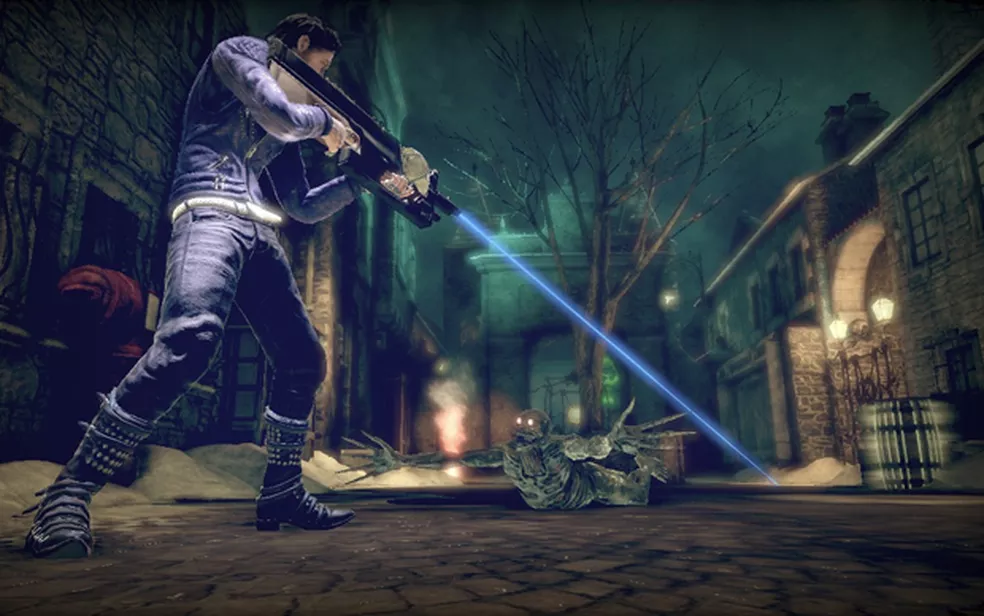
The concept behind Shadows of the Damned is oddly simple. The mad (no, literally, she is completely insane) lover of Garcia Hotspur, Paula, committed herself, and Fleming, the lord of Hell, took her as his own. Garcia’s only supporter as he makes his way to the City of the Damned to get her is Johnson. A goat-faced devil gallops atop a horse that only excretes evil. After expanding to the size of a 10-story building and peeing more darkness into a huge cascade, the monster then devours the last of the animal.
This game’s opening boss is this one. I hope you have already become engrossed. Johnson, a former devil with an English accent who serves as a light in Hotspur’s right hand and who transforms into a firearm whenever Hotspur shoots, is a more than ready ally.
In fact, he displays a lack of political knowledge comparable to Duke Nukem. Johnson is absolutely necessary to the action since he possesses three distinct versions of himself known as the Boner, the Teether, and the Monocussioner in their fundamental stages. They are semi-automatic handgun, fully automatic weapon, and a weapon that fires explosive heads.
Perhaps the most “typical” game created by Grasshopper Manufacture to date is Shadows of the Damned. It adopts the appearance of a third-person shooter where solving puzzles and learning new things are just as vital to the plot as combat, with many overt references to classic horror films. It is a more straightforward, even classic effort from a studio known for breaking rules and experimenting with gameplay.
But if you believed that nicer interaction would lead to a voyage that was very predictable and dull, you would be dead wrong. The people and concepts in Shadows of the Damned are more odd than anything in earlier games, almost as if to make up for the less bizarre action. Although Damned’s never-ending barrage of sex jokes can get old, the entire story and the masterfully delivered dialogues are just so outrageous that one cannot but chuckle along. Although the comedy occasionally verges on anti-humor, it is always enjoyable.
Even the basic action is handled in such a mysterious way that you might mistakenly believe it to be more innovative than it really is. For instance, you need to locate a key for certain door locks. Simple idea, but the keys are either eyes, brains, or strawberries which need to be placed into the mouths of wailing baby heads as the locks. Through the sheer force of display, commonly common gaming cliches may appear and feel surprisingly creative, and that’s no small task.
Although Shadows of the Damned is a ludicrous videogame, its insanity is presented in such a way that one can’t help but ignore basic logic and just play along with it. In spite of being in several ways Grasshopper’s best “regular” game, Damned continues to be the most unique, eccentric, and ridiculous game the studio has ever created. Despite relishing in its own quirkiness, however, the game really never ignores the player. In contrast to many “strange” games available, Damned encourages you to be there for the entire journey.
Dino Crisis Franchise
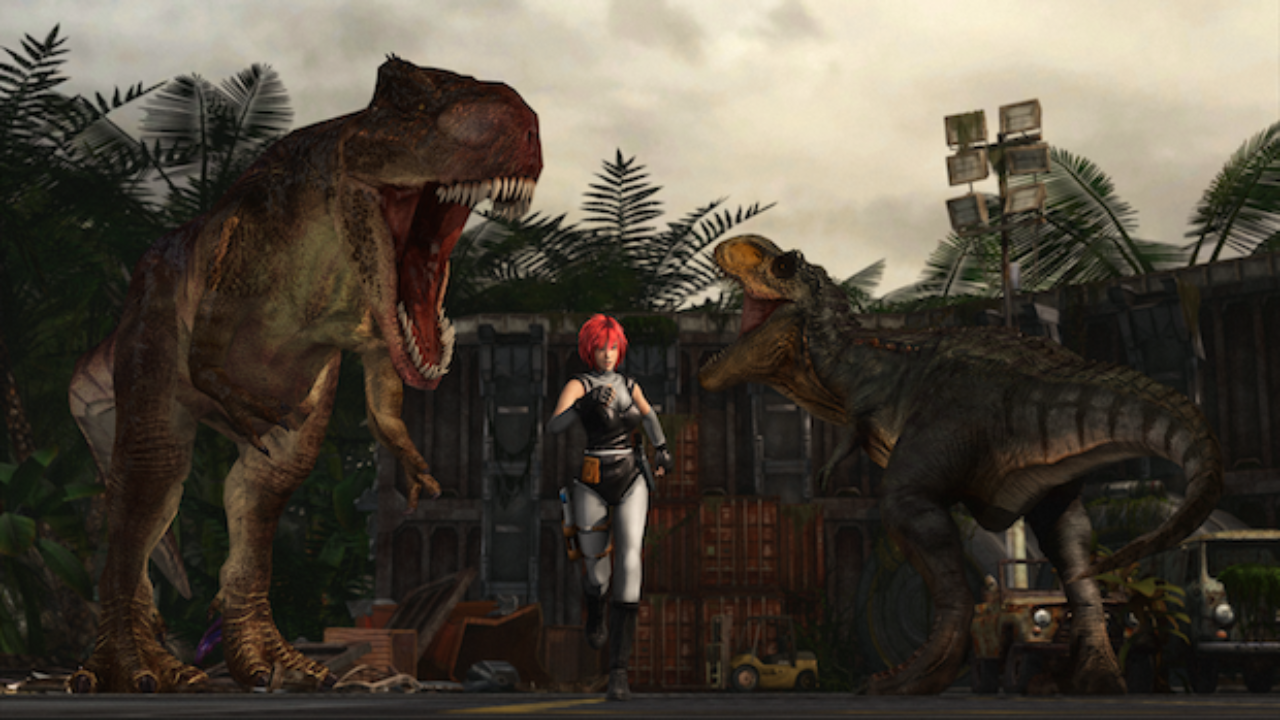
In terms of making survival horror videogames, Capcom asserts to be the greatest in the industry. Although the Resident Evil series has produced some excellent survival horror games throughout the decades, some players either didn’t enjoy the games or only loved a few of them. Capcom set intended to broaden its survival horror market out of concern that their brand would get boring and they would lose a significant revenue stream.
Dino Crisis, a title that essentially combines the backdrop of the successful Spielberg blockbuster “Jurassic Park” and the fundamental playable elements of Resident Evil, is the product of the effort at diversification. A military advance squad is sent to an area where a famous researcher is rumoured to be conducting study in the first moments of Dino Crisis. Once on the islands, one of your group members vanishes, and you start to notice several strange things there.
To begin with, the security booth’s lights are not on, and there is bloodshed and glass all over the floor. The three remaining crew members enter the barren, deserted research center on the island slowly and with caution. You take charge of Regina, after some deliberation on how to proceed in order to figure out what is happening, and your Dino Crisis journey starts to take shape.
Capcom’s standard Resident Evil control method is included in Dino Crisis. While fighting with zombies, this performs okay. However, people found coping with fast-moving raptors and monster bouts to be a bit tedious and slow. With the exception of character movement, the game uses the Dual Shock controller. Although you can sense the pulses and shocks, you cannot control the game with the analogue stick.
Although it is rather annoying, the game is designed so that traveling through the areas with the D-Pad is not difficult. Similar to Resident Evil, if you fall head over heels in love with the game after playing it, you likely will want to play it again. The noises are also amazing.
The conversation is perhaps a little campy, but it gets the job done. The audio is a conventional collection of arranged pieces that significantly heightens the suspense throughout the game. You’ll often be going along when you’ll hear footsteps and a scream following you.
The soundtrack will start, and you’ll tighten up your muscles in an effort to convince Regina to flee the danger that is about to approach her. Overall, Dino Crisis is entertaining the first occasion you play through it, and increases your excitement as you play more often. There are many good concepts here, and most of them are well executed and just pleasant. Dino Crisis must be added to your library right now if you want a good scare.
Parasite Eve Franchise

Aya Brea, a stern New York cop, chooses to unwind on Christmas Eve by going on a date to the opera. Things quickly change when the audience erupts impulsively as the singer begins to sing, but Aya seems curiously unfazed. The quest that follows depicts Aya as she faces up against “Eve,” an entity with powers far beyond those of any mortal. As she learns more about the scenario, it becomes apparent that there are some unsettling connections to Aya’s own background. She learns that Melissa, a drug-using celebrity, was previously Eve.
As you move from area to area frantically attempting to stop the carnage, Eve’s fury across New York City at Christmas is an amazing delight from beginning to end. Although this is a successor narrative that may be viewed independently of the original Japanese book Parasite Eve, the plot is based on the book, nevertheless.
Even though the game occasionally gets lost in the technical jargon of its fundamental concept, the idea of mitochondria—evolved cells handed down by female hosts—provides a fascinating central premise to keep the plot going. It can also be bizarre at times, but that only serves to enhance its appeal.
The survival horror cliches of battling in cramped, fixed-camera-angle locations and inclinations of waiting your turn are combined in an absolutely superb way. There are times when you may sidestep a flame and then deliver the fatal hit, which feels like a terrific rush. However, the game sometimes confines you in small locations wherein you won’t be able to avoid opponent attacks, which makes it feel unjust.
The boss fights deserve special note because they feel truly monumental in terms of scope and grandeur. A particular favourite of the fans is the fight with Eve while riding in a horse-drawn carriage, but people also enjoyed the boss battles with the Worms (fighting as they emerge from the earth) and the terrifying spider you face atop a clinic. They are the kind of extravaganza that Square has always been known for, and they are done incredibly well here.
Parasite Eve is Square at the peak of their innovative era, blazing on all cylinders with its sophisticated and meaningful storyline, excellent design and ingenious gameplay twist. The story might occasionally become confusing and the action can occasionally border on being frustrating, but overall, this PS1 classic is definitely worth playing again.
Cold Fear (2005)
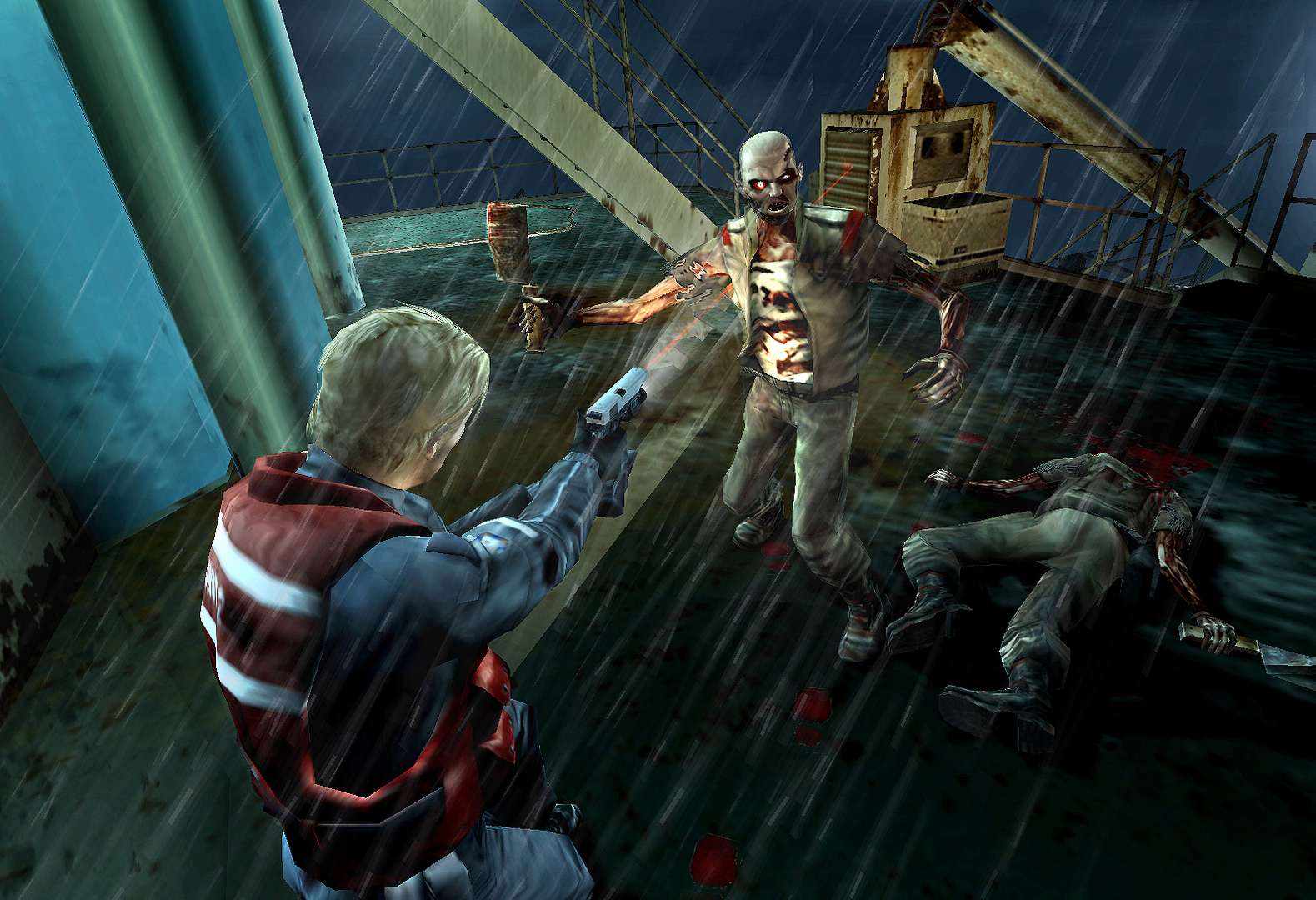
In Cold Fear, you take on the role of Tom Hansen, a US Coast Guard agent who has been assigned to look into a suspicious Russian ship on a rainy night at sea. Early on, you learn that the boat is inhabited by alien beings who feed on people and pose a serious threat from both within and without their host corpses, in addition to a large number of unfriendly Russian soldiers. As you unravel the mystery of the ship and its deadly contents, your inquiry takes you to a few friendly faces and a lot of scary ones.
The third-person view with the option to switch to first-person targeting enables you to direct your vision freely. Even though the fixed camera offers a larger view of the scene, switching between angles makes it difficult to maintain smooth control, which is an issue as you try to navigate around in the boat and kill any adversaries you come across.
The PS2 version’s added trigger keys make it slightly easier to crouch, run and fast browse among weapons with additional controls. The change isn’t that great, though, because the Xbox controller’s firearm scroll is located on the white and black buttons. Moving activates a gauge on the display that, once empty, prevents you from continuing to run. You will regularly check the meter because of this, which helps make some tasks harder, but it doesn’t significantly change the game or add anything to it.
The control system is impacted by wave motion since Cold Fear actually occurs in ocean-bound settings. The unstable motion of the deck below you is especially evident while you’re outside, and at times it seems like you’re walking almost entirely sideways. The abilities suffer as a result, yet the compromise adds something special and intriguing to the action.
Some of the most captivating elements of Cold Fear are experienced as you struggle against the boat’s tossing and plan your bridge crossings for when the seas are at their lowest. Sadly, the outdoor surroundings are not fully utilized, and after the first hour, the bulk of the game is spent inside monotonous buildings.
The music and sound elements are the atmosphere’s main saviour. Powerful and extremely adaptable, the soundtrack can change to fit the ambiance as needed. Though a few of the songs become monotonous and even unpleasant after a while, the music generally benefits the game.
The rough creaking of the metal boat and the persistent pounding of the seas against the deck are both fitting sound effects for the setting. Although the narration is rather standard, it is improbable that a former Coast Guard captain who became a rebel soldier would seem anything other than the gruff voice used for Tom Hansen. Up to 13 distinct art galleries can be unlocked as the game progresses, and these exhibit some of the game’s greater striking images.
If you can gather the motivation to complete the game again, you can also unlock a fourth difficulty level. However, it’s possible that the eight hours or so it takes you to complete the game in the first round will be sufficient, if not too much. Despite having some innovative gameplay aspects and being a clean action game, Cold Fear excels while executing the standards perfectly. If the few clichés amuse you, it’s surely entertaining for a long time, and if you’re seeking for a truly original survival horror game, you’re in the proper spot.
Obscure (2007)
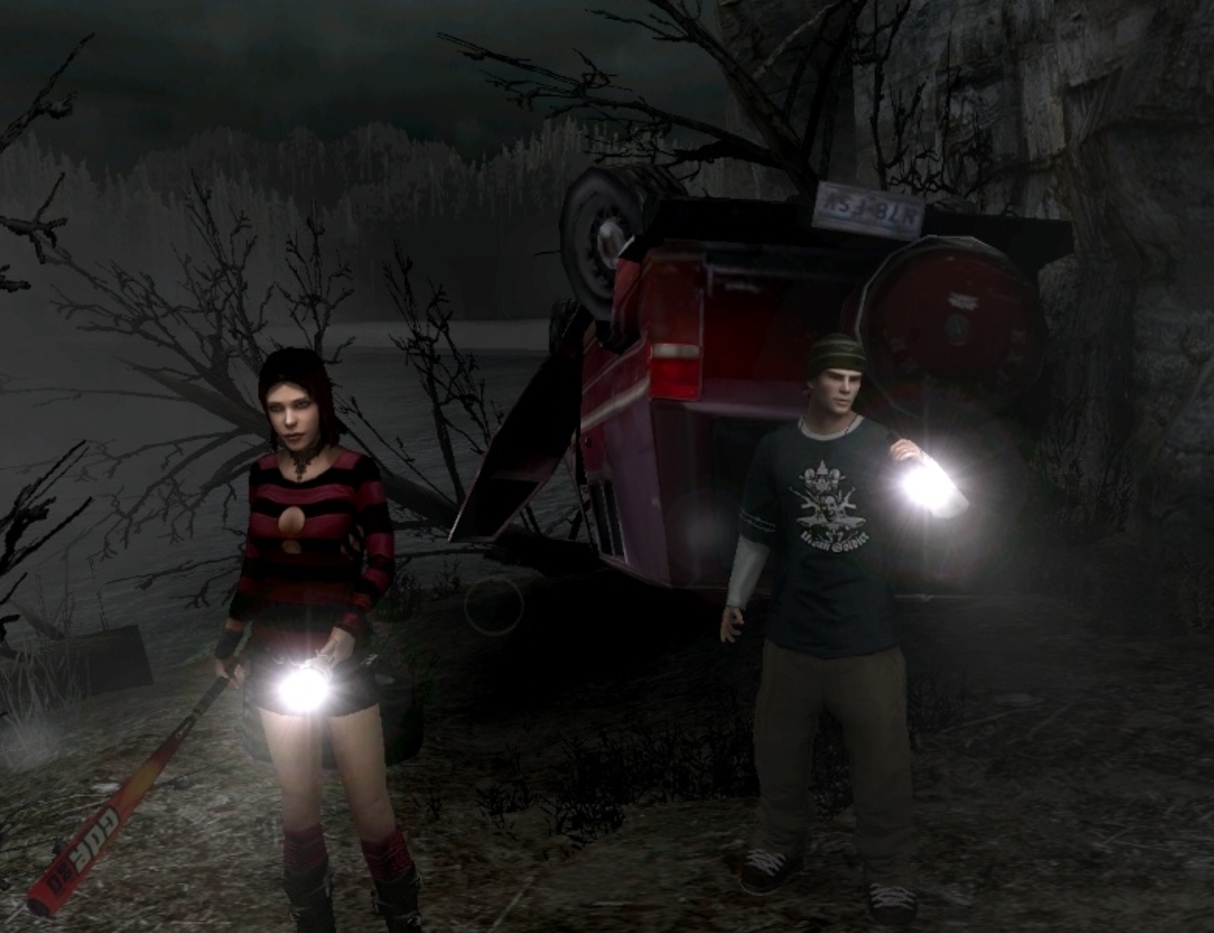
At Leafmore High, weird stuff is occurring. Three teens launched the search for a lost friend. They discover that they were imprisoned within the school and must now investigate the bizarre events. The player controls the five youngsters as they roam the campus and engage in combat with a variety of sick students.
The kids learn that the adversaries are vulnerable to light and can be destroyed by direct sunlight. Their enemies and the dark, ominous aura that surrounds them are only marginally made weaker by flashlights. The students learn about a plot involving experiments on rare and endangered spores, injections that can turn individuals into mutant creatures, and the potential of immortality.
Thanks to the studies they conducted on one other, it is found that the principal, Herbert, and the doctor, Elisabeth, are both over 100 years old while appearing to be in their 60s. The game follows the consequences of these discoveries and is rather interesting to experience them by actually playing it, hence we won’t be delving deeper into the story line.
The two-player co-op gameplay in Obscure is at the center of its creativity, even though the concept is by no means novel. However, Obscure takes a much more sensible approach by keeping everything concurrent, in contrast to earlier games that attempted to capitalize on a leapfrog system when tackling the issue of two-player survival.
Similar to a buddy cop movie, this simultaneous “one-screen system” has two protagonists working toward the same goal at once, with one offering support for the other. The outcome is a rather smooth and quick adventure that may easily develop into a fantastic two-person party game.
Fans can all agree that the game sounds great and looks great. The facial animations and lighting are really, truly amazing, despite the low-res materials and somewhat stiff motions. In addition, Dreamcatcher’s game portrays the use and utility of a flashlight in the dark with unsettling realism, much like the 2001 Dreamcast survival game Alone in the Dark: The New Nightmare.
The most effective aspect of the design, however, is the soundtracks and ambient music, which, when paired with the atmosphere’s predominance of darkness and the game’s good camera angles, keep the locations feeling eerily frightening, particularly early on in the game.
It’s a wonderful price and significantly superior to the standard of your usual low-budget title for what you get in the bundle. Obscure is different enough from other popular horror titles like Resident Evil and Silent Hill, even if price weren’t an issue, to encourage devoted fans of the genre to pick it up. Additionally, the co-op mode alone is nearly worth the price of admission, and the secret rewards you’ll get for finishing the adventure increase the game’s total value.
Deep Fear (1998)
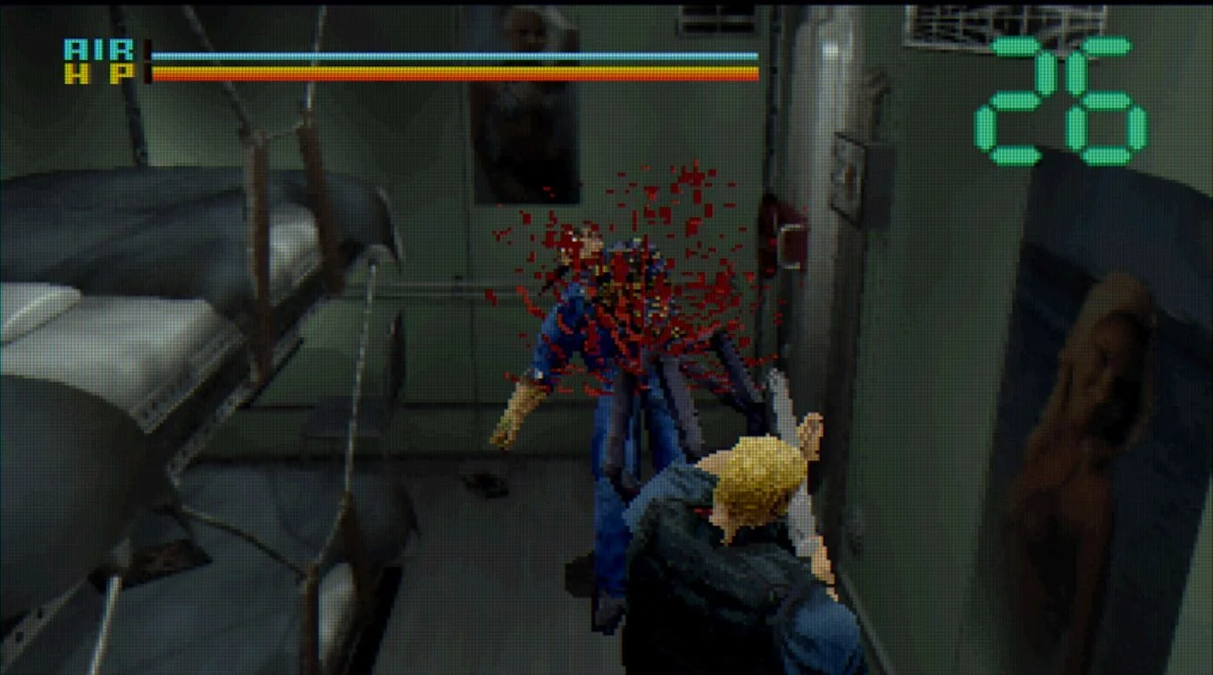
Sega’s response to the Resident Evil franchise is Deep Fear. You assume the position of John Mayor, a former Navy Seal who is now a part of the Emergency Rescue Services team. When everything starts to go wrong, you’re working on a deep-sea research rig miles below the water’s surface. It’s up to you to figure out why members of the crew are evolving into creatures that strikingly resemble the enemies in Resident Evil 2.
The configuration of the game, which is once more heavily influenced by RE, with the right-shoulder button pulling your firearm and the A button shooting it, also strikes a similar note. Other keys open your item panel, and moving your hero around is a pleasure if you have an analogue control pad. You are stranded below in Deep Fear, which is what sets it apart from Resident Evil. You can spice up a well-known idea by adding the fact that parts of the research rig are going out of air and oxygen cylinders must be located to restore the airflow.
Famed Japanese musician Kenji Kawai, best known for his work on the scores for the films Ghost in the Shell, Patlabor 2 and Ranma 1/2, created the music for Deep Fear. Players will find the music surprisingly effective despite not being as menacing as the score in RE. The score is appropriately dark. The instrumentals in Deep Fear are what fall short of expectations for the audio component.
While the noise of your running feet on the ground is acceptable, other noises, like gunshots, could’ve been handled better. You should absolutely purchase the import if you actually want to play this game. Considering that the game’s voice acting is entirely in English, it’s not too hard. Playing this game is not too difficult; the only panels that require translation are those for the inventory items; even then, some menus, such as those for the gas meter and ammo depot, are in English.
Alan Wake (2010)
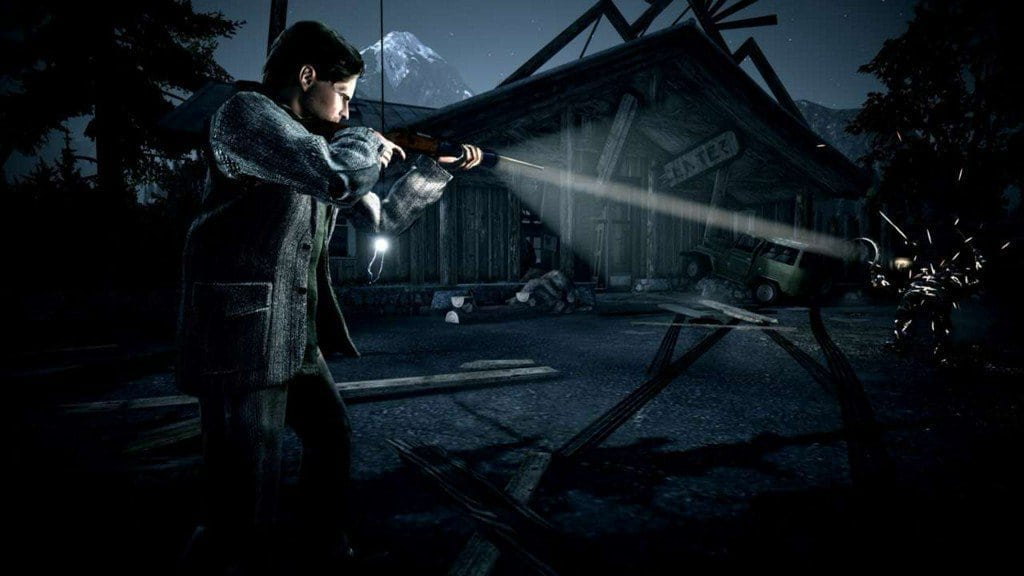
Alan Wake, the main character, doesn’t start out as an action figure. He is a well-known fiction author who is trying to get away from the demands of fame and artistic ambition, and his trip to Bright Falls swiftly takes on Twin Peaks-like weirdness. When his wife disappears and his hunt for her quickly deviates into the supernatural, he is left with no choice but to squeeze the button on his rifle in order to survive.
It’s an experience highly influenced by horror works by Stephen King and H.P. Lovecraft. In addition to the closely packed action gameplay that you would anticipate from a Remedy game, design, character development, and plot twists play equally important roles. Six episodes make up the main narrative, each of which is designed to resemble a TV miniseries.
Following the explanation of the first episode, each succeeding episode finishes on a cliff-hanger, fades to a title screen (oddly sans credits), plays music from the game’s great licenced soundtrack, and then starts with a review of the previous episode’s events. Even though episodic gaming isn’t very innovative at this point, Remedy is attempting to provide a video game experience which appears like a novel delivered as a TV show. The presentation style matches with this goal.
Bright Falls and the surrounding rocky environment are expertly rendered and realistically resonant. Everybody in the town is familiar with Wake, and despite the fact that hazards are invading from all directions, they appear to be more concerned and eager about a forthcoming town festival.
The radio shows, script pages and conversations with everybody help to confirm their identities. Of course, everybody has secrets, some evil and some funny. Wake has a modest arsenal, yet everything in it is useful. People infected with darkness, ravenous birds, large pieces of equipment and cars that are thrown around like toys, and even enormous construction equipment that spring from their hiding places to crush you are all rising from the woods. To stop anything being controlled by darkness, you must first strike it with light.
The most straightforward approach is Wake’s light. It will shoot off a shower of sparks when pointed at a dark surface, resembling a circle saw on steel. Although being a fantasy universe of twisted realities and darkness, Remedy has created a world that is firmly grounded in reality. Bright Falls and its rocky surroundings look and feel alive, thanks to excellent environmental layout and some amazing visual and aural effects.
It’s a difficult game to put down when you’ve started playing it, despite the cameras occasionally giving you problems and the mystical tale preferring to raise more questions than it answers. Remedy has done a fantastic job of fusing aspects from literature, tv and video games to produce an atmosphere that is full of thrills, laughter and horrors that is entertaining to play in as well as to watch.
Extermination (2001)
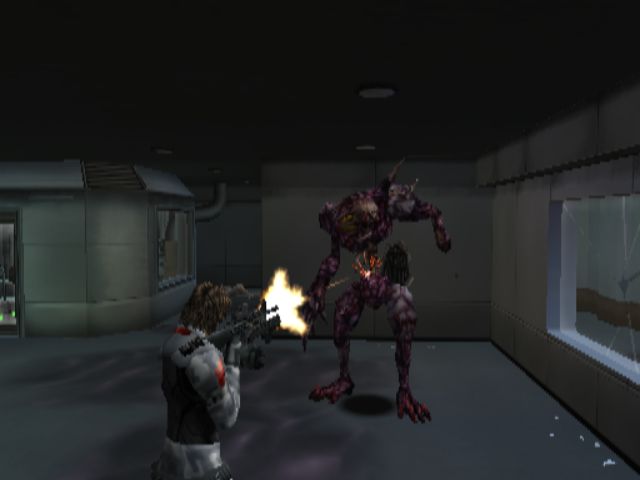
You play as Dennis Riley, a sergeant of a special forces squad sent to examine strange occurrences at a hidden military outpost in the South Pole, in a narrative that is similar to Capcom’s Resident Evil. Unsurprisingly, the strange events entail a viral epidemic that has forced the people living in the facility to evolve into horrifying creatures.
If you are attacked by one of these species, you must find a treatment right enough before tendrils and bio-organic weaponry start sprouting out of your body. These animals are not only aggressive and violent, but their virus is also spreading. The action of Extermination is very similar to Resident Evil in terms of premise, but there are a lot of significant differences—some of which are upgrades.
The mechanics are more like those of Onimusha and Silent Hill, so you can manoeuvre your avatar in a specific direction without needing first to turn him around. The surroundings are polygons and seen from a hovering camera, similar to Silent Hill and Capcom’s unconventional Resident Evil Code: Veronica, as opposed to generated backdrops seen from fixed camera angles.
The visuals in Extermination aren’t particularly good, but they do the work with the unusual flair. While the exterior locations are significantly more diversified than many of their precursors and include a near-perfect snowy effect, the inner sceneries resemble those of many other titles we’ve seen previously.
The game frequently makes use of water graphics. The creatures get more impressive as you advance through the game, but the human characters seem a touch wooden in terms of design and movement. Extermination’s score has the concise feel of a political thriller, which suits the music perfectly. The sound effects are also excellent, ranging from the turn of a door to the squish of a foot through a throbbing chaos of evolution.
There are very few kinks in extermination. Fans are in for a thrill when it suddenly picks up after starting off so slowly that it appears like it would never do so. The game has some good points as well, though it doesn’t quite come together in a way that is as interesting as games in its class. It is definitely worth trying because it isn’t subpar and occasionally enjoyable.
Alone In The Dark (2008)
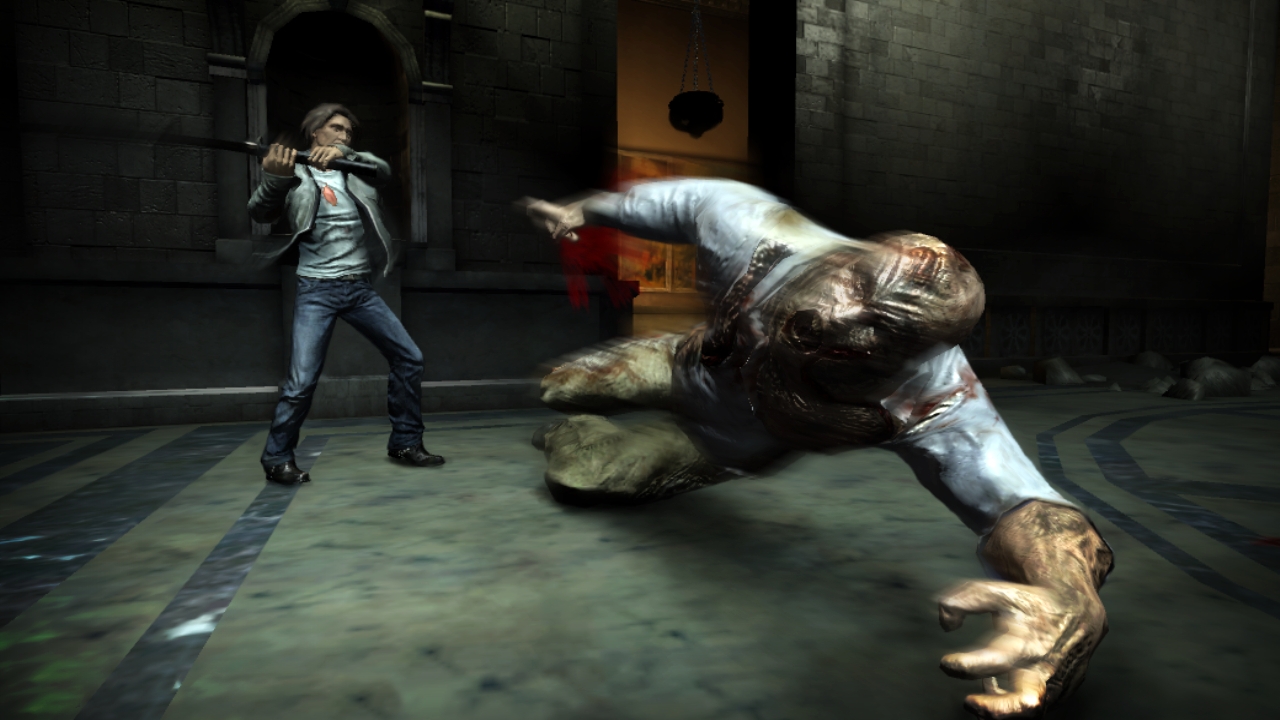
The main character in Alone in the Dark wakes up in a burning building and has no memory of who he is or how he ended up surrounded by scary thugs. He quickly discovers that he is Edward Carnby, a rough guy with a bad language who is involved in some evil deeds.
He retreats into Central Park to learn the truth about his past and the significance of a stone with enigmatic characteristics as he makes his way out of the collapsing skyscraper together with the feisty Sara. As the stern, amnesic main character, you go through a devastated New York City, where you start to solve the several riddles in front of you. The inventory and item system is one of this journey’s most interesting and well-done features.
The number of objects you can carry in your belt and coat pockets is the maximum allowed by the game. To check what you have, you actually open up your jacket, graphically subverting the tradition of the vast but hidden storage. This subversion does present itself in numerous ways throughout the game, even though it never quite manages to be revolutionary, giving the impression that Alone in the Dark is a fresh experience.
You’ll explore a number of meticulously designed interior habitats in addition to the enormous and diverse Central Park. These are all excellently executed and work best when combined with one of the game’s several theatrical set-pieces. The camera will frequently stretch out to a wider viewpoint throughout these scenes, giving you a better sense of scale and paying homage to the fixed-camera origins of earlier Alone in the Dark games.
There are undoubtedly some errors present as well, and the dynamic lighting can occasionally transform a setting intended to be immersive into one where something is off. The aforementioned fire is undoubtedly a highlight, but the representation isn’t as striking as it could be due to a number of flaws. The ambitious video game Alone in the Dark defies several gaming norms and offers tons of fun gameplay.
Unfortunately, the technical execution falls short of this goal by a very thin margin, and the ensuing roughness may seem too expensive for many players to afford. However, Alone in the Dark will undoubtedly provide you with some amusement if you’re looking for a game that experiments with new ideas and does so to a great extent.
The Evil Within (2014)
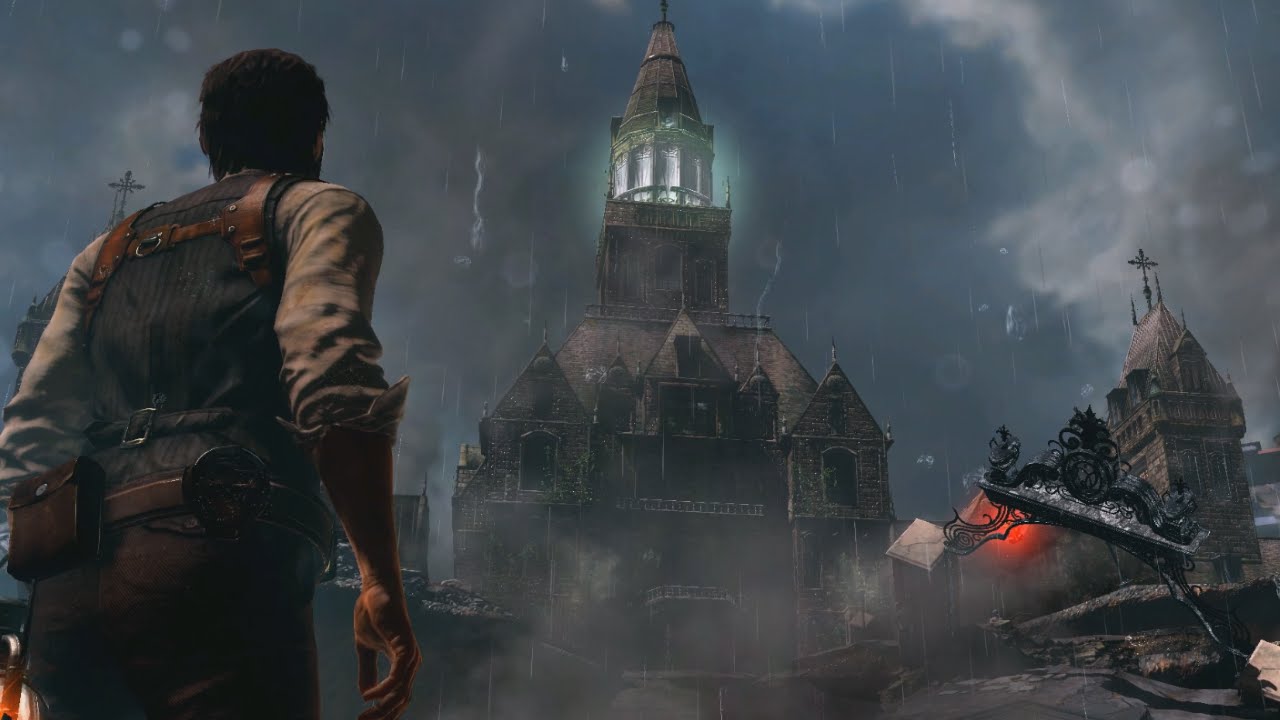
The Evil Within matches Resident Evil 4, the creator Shinji Mikami’s final entry in the genre, in terms of appearance, usability, and spirituality. However, Mikami and his major development company Tango Gameworks have produced a harder, grimmer game this time about, so it’s not just a copy. It is not a game that uses cheap jump scares to shock players. It is propelled by a long-lasting sense of uneasiness that permeates everything and sends your heart racing at the slightest sound of glass breaking under your feet or the distant groan of an unidentified foe.
The game’s atmospheric use, which is so dark and dramatic it frequently verges on stifling, is mostly responsible for this tension, but it’s also a credit to the action-heavy combat system, whose limited weaponry and constant prospect of dying is as taxing as it is rewarding. Sebastian Castellanos, an investigator hired to look into a heinous string of murders at a nearby mental hospital, is at the core of it all.
The short outline to this investigative process serves as The Evil Within’s only respite from the chaos that ensues, with Castellanos being plunged into a twisting narrative that is only occasionally coherent and filled with ghostly apparitions, horrifying beasts, and an endless supply of nightmare-inducing settings.
The frightening mix of light and darkness and the ominous audio embellishments provide such a strong foundation for The Evil Within’s frightening experience that simply moving around its environs will send your heart skipping a beat. The Evil Within transports you through a wide range of locations with one theme linking them all together: an absolutely terrifying feeling of ambience. It may have you trying to explore a deserted psychiatric hospital covered in blood and overruled wheelchairs or a devastated urban center in which underwater beasts prowl its flooded roads.
There are several horrifying creatures in The Evil Within that would enjoy ripping you off limb by limb. As the game progresses, you’re up with progressively cruel and difficult enemies in addition to the strangely humanoid creatures who litter the early chapters, brandishing machetes and flinging sticks of dynamite like enhanced zombies. But wherever you are in the game’s extensive narrative, death is always just around the corner.
The Evil Within is a horrific experience that can transform you into a puddle of chopped liver on the floor with the smallest mental lapse. Anyone with a strong stomach should engage in this battle. Because despite its occasional stumbles, The Evil Within constantly gets back up. All those problems floating around on the edges ultimately melt away to reveal a rewarding, if not slightly marred, return to traditional survival horror because it accomplishes what it does at its heart so effectively.
